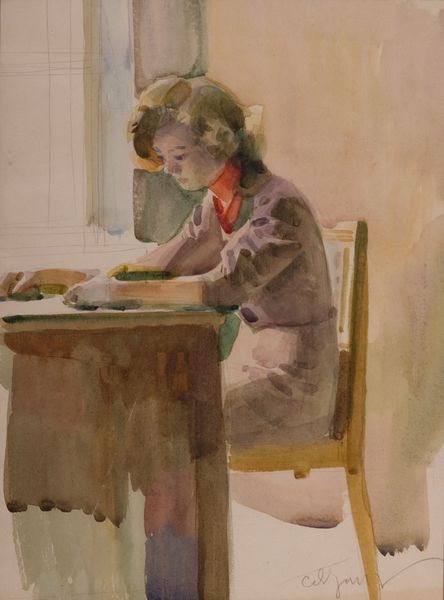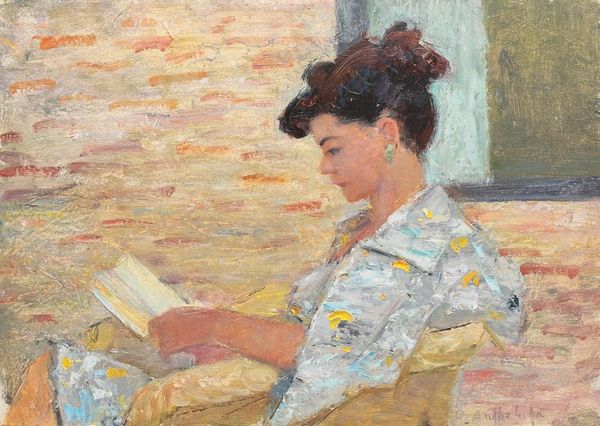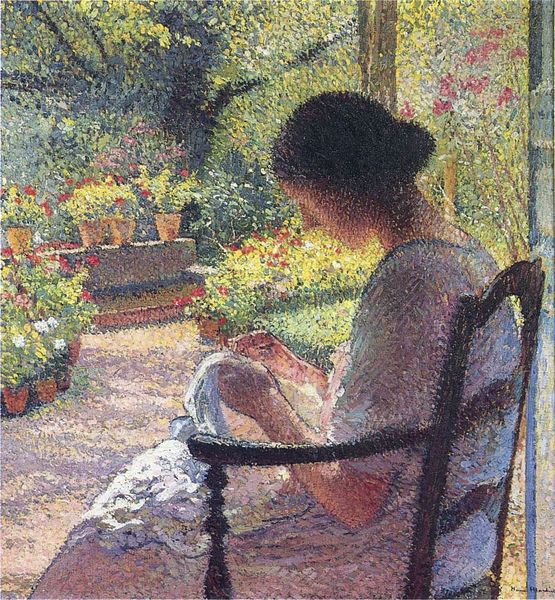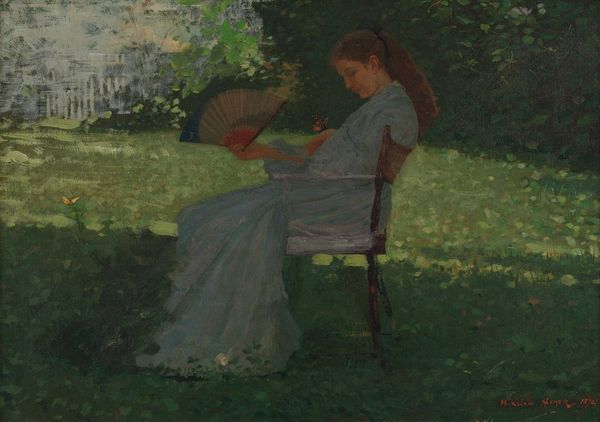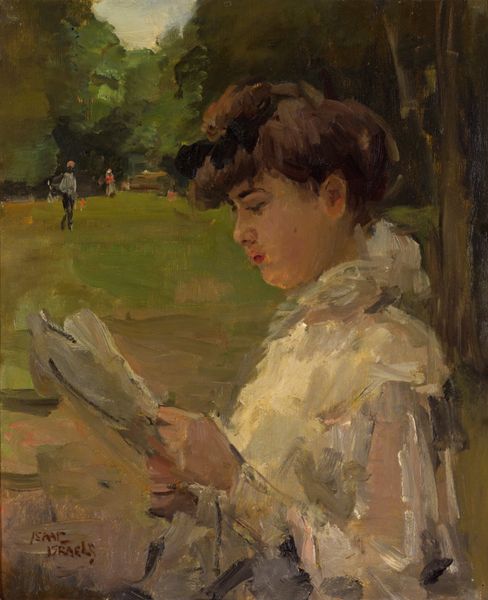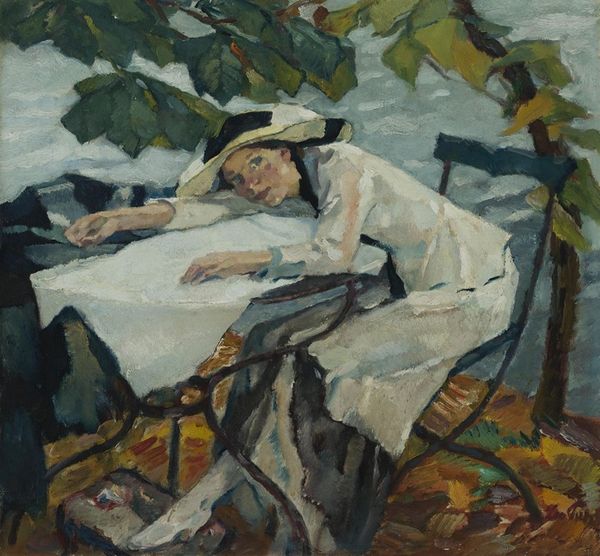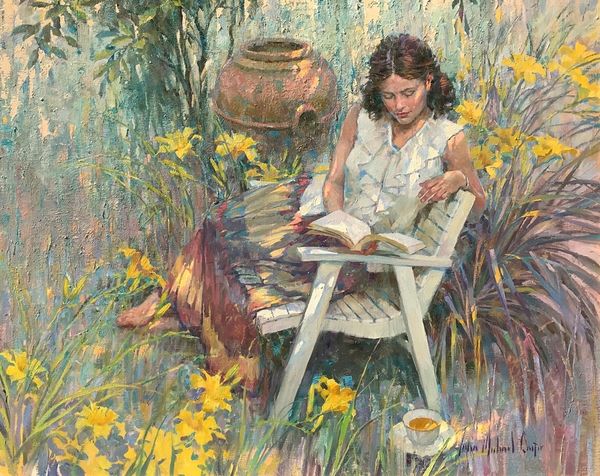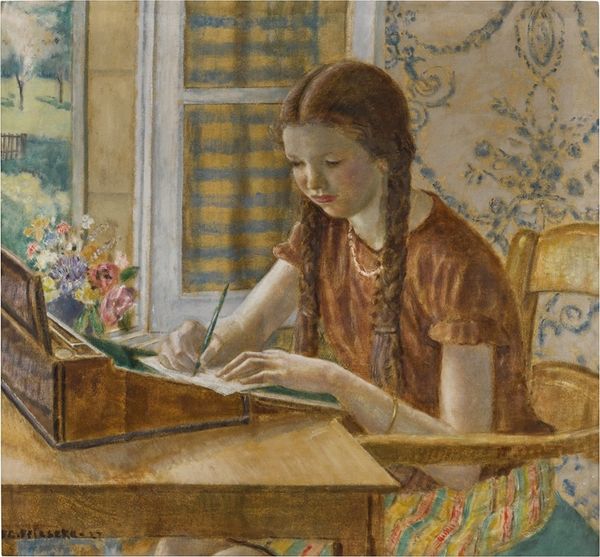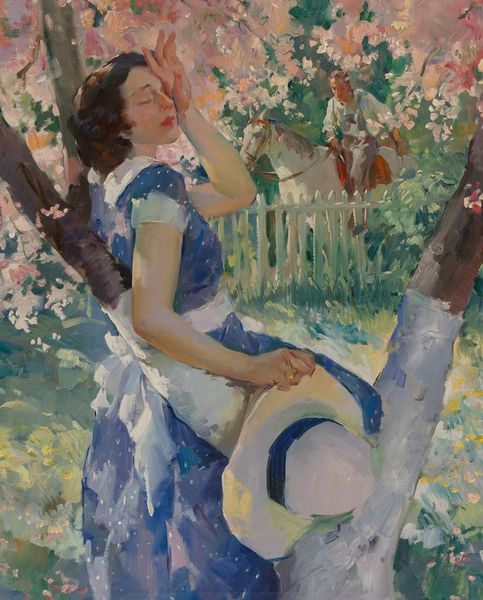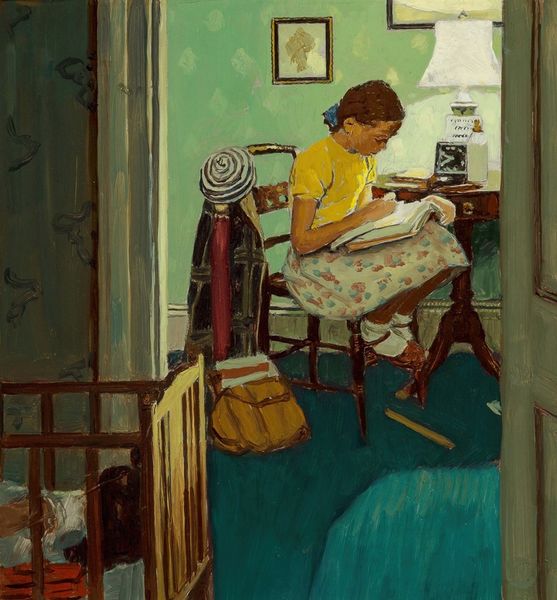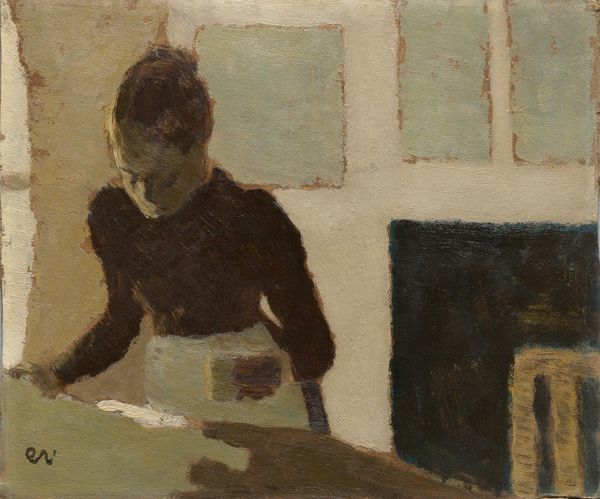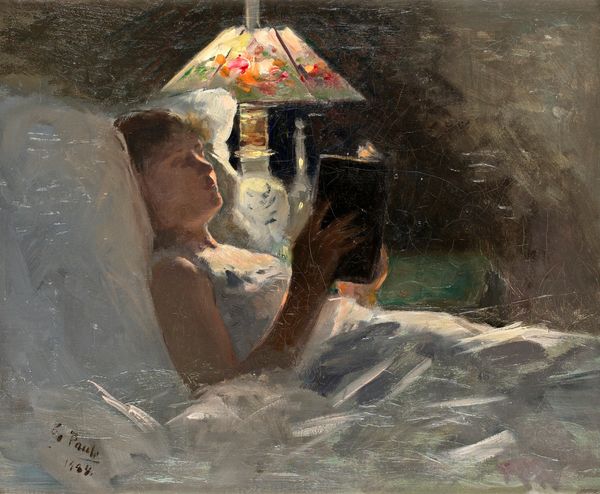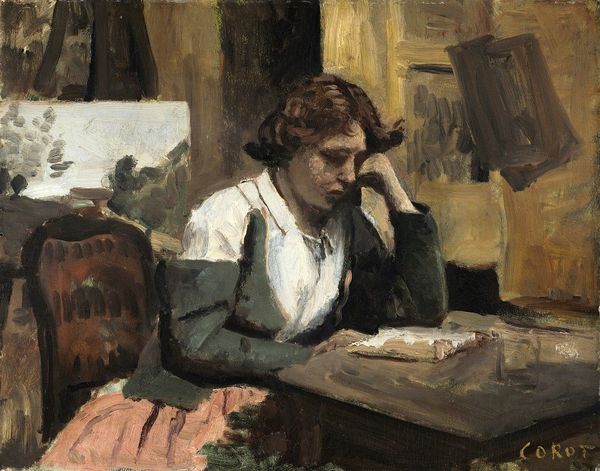
Dimensions: 23.7 x 33 cm
Copyright: Public domain US
Editor: This is Henri Matisse’s "Woman Reading in a Garden," painted in 1903. It's an oil painting, capturing a peaceful moment. The impressionistic brushstrokes create such a tranquil, almost private scene. What are your initial thoughts when you look at this? Curator: It's interesting how this piece captures the burgeoning interest in "intimism" and the representation of domesticity in art. The figure reading feels quite secluded, enveloped by nature, a contrast to the increasing urbanization of the era. What role do you think the garden plays here? Editor: It definitely provides a sense of enclosure, like a private sanctuary. But is it also about constructing an ideal of femininity, linking women with nature and domesticity? Curator: Precisely. Think about the art market and its patrons at the time. Pictures of women in leisurely pursuits catered to a specific, often bourgeois, audience. What about the act of reading itself? Editor: It positions the woman as intellectual, but within acceptable bounds – a "domestic intellectual," if you will. It's not a political treatise she's poring over! It makes me wonder about access to education and literacy rates for women then. Curator: That's a critical point. Who had the luxury to spend time reading in a garden? And whose stories were deemed worthy of representation in art? Do you notice anything about how Matisse handles the light and shadow? Editor: It's not overtly dramatic; the lighting reinforces the overall sense of serenity and perhaps hints at social harmony and a privileged existence. Seeing it this way, I’m much more aware of how societal norms and expectations are woven into what at first seemed like a simple scene. Curator: And that's the beauty of engaging with art history! It opens up a dialogue about power, representation, and the narratives embedded within visual culture.
Comments
No comments
Be the first to comment and join the conversation on the ultimate creative platform.
